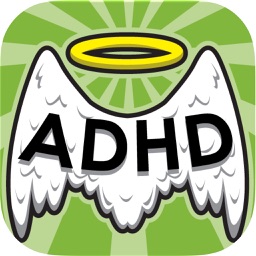Attention Deficit Hyperactivity Disorder (ADHD) presents unique challenges in the classroom, affecting students’ ability to focus, stay organized, and follow through with assignments. However, with the right strategies, educators can create a supportive learning environment that helps these students thrive. This article outlines effective approaches for managing ADHD in the classroom, aiming to enhance both teaching practices and student outcomes.
Understanding ADHD
ADHD is a neurodevelopmental disorder characterized by symptoms of inattention, hyperactivity, and impulsivity. These symptoms can significantly impact a student’s ability to succeed academically and socially. Students with symptoms of ADHD might struggle with maintaining attention during lectures, organizing their tasks, completing assignments on time, and following classroom rules.
Effective management begins with understanding the specific needs and challenges faced by students with ADHD. Each student is unique, and their needs may vary widely. Thus, a tailored approach that incorporates various strategies can help address these differences and support their learning journey.
Classroom Environment
1. Create a Structured Environment
A well-organized and predictable classroom can greatly benefit students with ADHD. Establish clear routines and consistent schedules. Use visual schedules and checklists to help students understand what to expect throughout the day. A structured environment reduces distractions and provides a sense of security, which can help students with ADHD focus better.
2. Minimize Distractions
Reduce external distractions by arranging the classroom layout strategically. Place students with ADHD in a location where they are less likely to be distracted by high-traffic areas or windows. Consider using noise-canceling headphones or quiet workspaces to help them concentrate. Additionally, keep the classroom visually uncluttered to minimize overstimulation.
Instructional Strategies
3. Break Tasks into Manageable Chunks
Students with ADHD often struggle with tasks that seem overwhelming. Breaking assignments into smaller, more manageable chunks can make them feel more achievable. Provide clear, step-by-step instructions and use visual aids to outline each step. Encourage students to focus on completing one task at a time before moving on to the next.
4. Use Multisensory Approaches
Incorporating multisensory learning techniques can engage different learning styles and keep students with ADHD interested. Combine visual, auditory, and kinesthetic activities to reinforce learning. For example, use hands-on activities, interactive games, and visual aids to supplement verbal instructions.
5. Implement Frequent Breaks
Allowing short, scheduled breaks can help students with ADHD maintain focus and prevent burnout. Implement “brain breaks” where students can stretch, move around, or engage in a quick physical activity. These breaks can help them return to their tasks with renewed energy and concentration.
Behavioral Management
6. Set Clear Expectations and Consequences
Clearly define classroom rules and expectations. Use positive reinforcement to encourage desired behaviors and provide immediate feedback when rules are followed. Implement a consistent system of rewards and consequences to help students understand the impact of their behavior and motivate them to adhere to expectations.
7. Develop Individualized Behavior Plans
An individualized behavior plan can address specific challenges faced by a student with ADHD. Work with the student, their parents, and any relevant support staff to create a plan that includes tailored goals, strategies for behavior management, and regular check-ins to monitor progress. Adjust the plan as needed based on the student’s evolving needs.
8. Encourage Self-Monitoring
Teaching students with ADHD to monitor their own behavior and progress can foster self-awareness and accountability. Use tools such as self-monitoring charts or apps that help students track their attention, behavior, and task completion. Provide guidance on how to use these tools effectively and incorporate them into daily routines.
Supportive Relationships
9. Foster Positive Teacher-Student Relationships
Building strong, supportive relationships with students can enhance their motivation and engagement. Show empathy and understanding towards their challenges, and provide encouragement and praise for their efforts. A positive teacher-student relationship can help students feel valued and more willing to participate in classroom activities.
10. Collaborate with Parents and Specialists
Effective management of ADHD involves collaboration between teachers, parents, and specialists. Maintain open lines of communication with parents to share observations, discuss strategies, and address any concerns. Work with school counselors, special education staff, and other professionals to ensure a comprehensive approach to supporting the student.
Technology and Tools
11. Utilize Organizational Tools
Technology can assist students with ADHD in staying organized and managing their time. Encourage the use of digital planners, reminders, and organizational apps to help them keep track of assignments and deadlines. Tools such as speech-to-text software or audiobooks can also support their learning needs.
12. Implement Adaptive Learning Technologies
Adaptive learning technologies can provide personalized support for students with treatment of ADHD. Educational apps and software that adjust to individual learning paces and styles can offer tailored practice and reinforcement. These tools can help students engage with the material in ways that align with their strengths and needs.
Encouraging Student Engagement
13. Incorporate Choice and Autonomy
Providing students with choices in their learning can increase engagement and motivation. Allow them to select topics of interest, choose from different types of assignments, or participate in group work. Autonomy can help students feel more invested in their learning and reduce feelings of frustration.
14. Set Up a Reward System
A well-structured reward system can reinforce positive behavior and academic progress. Establish clear criteria for earning rewards and ensure that the system is motivating for each individual student. Rewards can range from verbal praise to tangible incentives, depending on what is most effective for the student.
Conclusion
Managing ADHD in the classroom requires a multifaceted approach that combines structured environments, tailored instructional strategies, and supportive relationships. By implementing these effective strategies, educators can create a learning environment that accommodates the needs of students with ADHD, fostering their academic success and overall well-being. Collaboration with parents and specialists, alongside the use of technology and adaptive tools, further enhances the support provided. Ultimately, a thoughtful and proactive approach can help students with ADHD navigate their educational journey with greater confidence and achievement.


